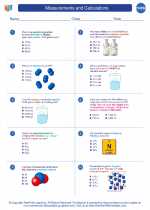Phospholipids
Phospholipids are a class of lipids that are a major component of all cell membranes. They are amphiphilic molecules, meaning they have both hydrophilic (water-attracting) and hydrophobic (water-repelling) regions. This unique property allows phospholipids to form the basic structure of cell membranes, which separate the interior of the cell from the external environment.
Structure of Phospholipids
Phospholipids consist of a glycerol molecule, two fatty acid chains, a phosphate group, and a polar molecule (such as choline or serine). The fatty acid chains are hydrophobic and form the tail of the phospholipid, while the phosphate group and polar molecule form the hydrophilic head.
Function of Phospholipids
Phospholipids play a crucial role in maintaining the structural integrity and permeability of cell membranes. They form a bilayer structure, with the hydrophobic tails facing inward and the hydrophilic heads facing outward, creating a barrier that controls the passage of substances in and out of the cell.
Biological Significance
Phospholipids also serve as a precursor for the synthesis of various signaling molecules and lipid mediators, and play a role in cell signaling and communication. They are essential for the proper functioning of cells and are involved in processes such as cell growth, division, and apoptosis.
Study Guide
- Describe the structure of phospholipids and explain their amphiphilic nature.
- Discuss the role of phospholipids in the structure and function of cell membranes.
- Explain the biological significance of phospholipids in cellular processes.
- Compare and contrast phospholipids with other types of lipids, such as triglycerides and cholesterol.
- Discuss the role of phospholipids in lipid signaling and cell communication.
Understanding the properties and functions of phospholipids is essential for comprehending the fundamental processes of cell biology and biochemistry. Mastery of this topic will also provide a solid foundation for further studies in fields such as molecular biology, pharmacology, and biotechnology.
.◂Chemistry Worksheets and Study Guides High School. Measurements and Calculations

 Worksheet/Answer key
Worksheet/Answer key
 Worksheet/Answer key
Worksheet/Answer key
